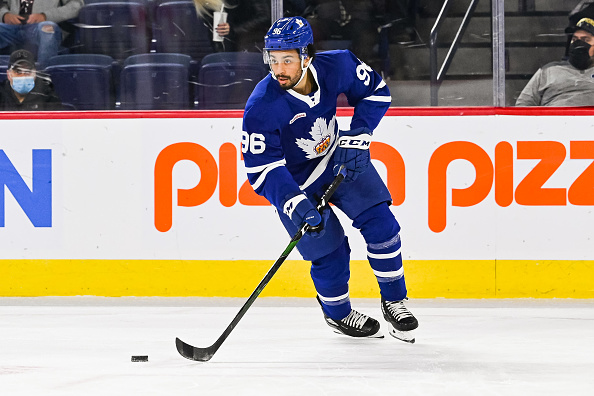Player development seems to always result in more questions than answers. How likely is it for a top pick to pan out? What makes a player a “steal”? Last Word On Hockey has a new series on how to properly develop prospects from all different spots throughout the draft. This week’s piece involves draft picks in the back half of the first round and how they were used early in their careers.
NHL Player Development Of First-Round Picks
In the span of 2005 through 2015, there were 84 total selections made between 16th overall and 30th overall on forwards playing in North America. Looking at all 84 forwards, they were split into different categories. Those categories were “Forwards Deemed NHL-Ready and Brought In Immediately When Ready,” “Forwards Near NHL-Ready and Brought In Immediately When Near-Ready,” “Forwards Rushed Slightly,” “Forwards Rushed,” “Forwards Forced,” “A Little Patience,” “Patience,” and “Too Much Patience.”
There were 12 forwards who fell into the fourth category, “rushed,” on the list. Of those 12 players, seven made their NHL impacts in their DY+3 season. Those players are Michael McCarron, Brock Boeser, Colin White, Tyler Ennis, Chris Stewart, Quinton Howden, and Joshua Ho-Sang. In this piece, we look at Josh Ho-Sang.
In this piece, we will be using stats from Elite Prospects (raw stats) and Hockey Reference (ice time). Additionally, the analytics we are using are as follows: even-strength offence goals above replacement (EVO), even-strength defence goals above replacement (EVD), wins above replacement (WAR) and goals above replacement (GAR). Those analytics are from Evolving Hockey (subscription required).
NHL Player Development Of Josh Ho-Sang
Ho-Sang, drafted 28th overall in the 2014 NHL draft by the New York Islanders, came out of the OHL’s Windsor Spitfires organization. In his DY-1 season, Ho-Sang scored 14 goals and 30 assists for 44 points in 63 games played, for 0.698 points per game. That ranked 46th out of the aforementioned 84 forwards in DY-1 production. Then, he scored 32 goals and 53 assists for 85 points in 67 games the following year, for 1.269 points per game. That ranked 31st amongst those same 84 forwards in DY production. After being drafted, Ho-Sang would see two more seasons at the OHL level before getting his chance at professional hockey.
In his DY+1 season, Ho-Sang would be traded after the first 11 games by the Spitfires to the Niagara IceDogs. In total, he scored 17 goals and 64 assists for 81 points in 60 games, for 1.35 points per game. That ranked 18th out of 82 forwards still outside the NHL in DY+1 production. The following year, with the IceDogs, Ho-Sang scored 19 goals and 63 assists for 82 points in 66 games, for 1.242 points per game. That ranked 18th among the 70 forwards still outside the NHL in DY+2 production. After that last season in the OHL, Ho-Sang would make the jump to the professional ranks.
How Josh Ho-Sang Was Used
Ho-Sang would split between the NHL and AHL in his first taste of men’s hockey. In the AHL, he would play 50 games and score 10 goals and 26 assists for 36 points in 50 games. That’s solid production for a young kid in his first AHL season. With that, he also played 21 NHL games, and averaged 16:27 time on ice per game. In that middle-six role, Ho-Sang scored four goals and six assists for 10 points. Analytically, Ho-Sang was decent. His EVO (2.3) was about average for rookies, while his EVD (-1.2) also was about what you’d expect from a rookie. With those fairly expected numbers, his WAR (0.4) and GAR (1.9) were moderate, but not great.
The following season, Ho-Sang would see himself split again between the AHL and NHL. This time, he would play another 50 AHL games, scoring eight goals and 23 assists for 31 points, a step down from the year prior. However, he would see one extra NHL game, at 22 total, and average less ice time, at 14:17 per game. In that smaller role, Ho-Sang would score two goals and 10 assists, for 12 points. The increased production barely changed his analytical scores. His EVO (2.3) and EVD (-1.2) were exactly the same as his rookie year. The only change was a regression in both his WAR (0.3) and GAR (1.6).
Year Three Regression For Josh Ho-Sang
In his third season, Ho-Sang would see more AHL time and less NHL time. Playing in 56 AHL games, he scored eight goals and 35 assists for 43 points, his best AHL performance yet. But in the NHL, he would play just 10 games and score two points. He scored those two points while averaging 14:31 per game, a slight increase from the year prior, albeit playing less than half the amount of games. Despite the regression in point production, Ho-Sang’s analytics weren’t terrible. Sure, his EVO (-1.1) took a big hit, but his EVD (1.6) was very strong and much improved. With his defensive improvements, his WAR (0.3) stayed the same, while his GAR (1.7) actually improved, ever-so-slightly.
Following that third season, in 2018-19, Ho-Sang would play just 22 AHL games in 2019-20, scoring 13 points. He would leave for Sweden the following season, playing nine total games and scoring three points. He would return to the AHL in 2021-22, for the Toronto Marlies. With the Toronto Maple Leafs affiliates, Ho-Sang scored 16 goals and 19 assists for 35 points in 47 games. This season, he is playing in Russia for the KHL’s Salavat Yulaev Ufa organization, where he has one assist in one game thus far. It’s safe to say that Josh Ho-Sang’s NHL player development did not go well. While his production was never there, and issues were certainly deeper than surface stats, he was never given more than 25 games to prove himself. He simply never stuck. But the deeper issues are a story for another day.
Junior league stats via Elite Prospects, NHL stats via Hockey Reference, NHL analytics via Evolving Hockey
Main photo:
Embed from Getty Images






